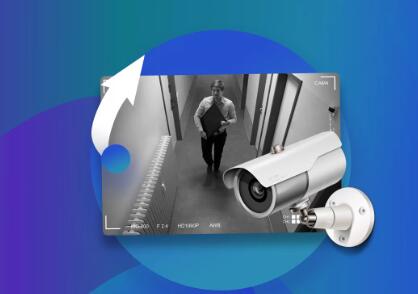Recovering deleted CCTV footage is a complex topic that involves several legal, technical, and procedural considerations. Below is a detailed exploration of the subject, broken down into sections to cover the various aspects involved.
1. CCTV Systems
1.1 Types of CCTV Systems
CCTV (Closed-Circuit Television) systems can vary widely in terms of technology and storage methods. The most common types include:
Analog CCTV: Uses traditional coaxial cables for transmission and often stores footage on DVRs (Digital Video Recorders).
IP CCTV: Utilizes internet protocols for video transmission and can store footage on NVRs (Network Video Recorders) or cloud services.

1.2 Storage Mechanisms
Footage is typically stored on hard drives, cloud storage, or external devices. The storage duration may vary based on the system configuration and storage capacity.
2. Deleting CCTV Footage
2.1 How Footage is Deleted
Deletion can occur in various ways:
Manual Deletion: Users may intentionally delete footage, often through the system’s interface.
Automatic Overwriting: Many systems are configured to overwrite old footage after a certain period (e.g., 30 days). This means that deleted footage may be lost forever unless recovery efforts are made quickly.
2.2 Implications of Deletion
Once footage is deleted, especially in systems configured to overwrite data, the chances of recovery decrease significantly. However, deleted files may not be immediately removed from the storage medium, allowing for potential recovery.
3. Law Enforcement and Digital Forensics
3.1 Role of Law Enforcement
When CCTV footage is deleted, law enforcement may become involved, especially if the footage is crucial to an investigation. Their ability to recover deleted footage depends on several factors:
Legal Authority: Police often need a warrant or subpoena to access stored data, especially from cloud services.
Collaboration with IT Professionals: Law enforcement may work with digital forensics experts to recover deleted footage.
3.2 Digital Forensics Techniques
Digital forensics involves a set of techniques and tools to recover deleted data. Some common methods include:
Data Recovery Software: Specialized software can scan storage devices for recoverable data fragments.
Disk Imaging: Forensic experts may create a bit-by-bit copy of a storage device to preserve evidence and analyze it without altering the original data.
File Signature Analysis: This technique identifies files based on their headers, which may still exist even if the file is deleted.
4. Legal Considerations
4.1 Privacy Laws
The recovery and use of CCTV footage must comply with privacy laws, which vary by jurisdiction. These laws often dictate how long footage can be stored and who can access it.
4.2 Chain of Custody
Maintaining a clear chain of custody is crucial for any evidence used in legal proceedings. Law enforcement must document every step taken to recover and handle the footage to ensure its admissibility in court.
5. Challenges in Recovery
5.1 Technical Limitations
The success of recovery efforts can be hindered by several technical challenges:
Overwriting: If the footage has been overwritten, recovery becomes nearly impossible.
Physical Damage: Hard drives or storage devices may be physically damaged, complicating recovery efforts.
5.2 Time Sensitivity
Time is critical in recovery efforts. The sooner law enforcement acts after deletion, the higher the chances of successful recovery.
6. Case Studies
6.1 Successful Recovery Examples
There have been instances where law enforcement successfully recovered deleted CCTV footage, leading to breakthroughs in criminal investigations.
6.2 Unsuccessful Recovery Attempts
Conversely, there are cases where recovery efforts failed due to the factors mentioned earlier, emphasizing the need for prompt action.
7. Future of CCTV and Recovery Technologies
7.1 Advances in Technology
As CCTV systems evolve, so do the methods for data storage and recovery. Innovations such as AI and machine learning may improve the efficiency of recovery processes.
7.2 Ethical Considerations
The balance between security and privacy remains a contentious issue. The potential for misuse of recovered footage raises ethical questions about surveillance practices.
While recovery is possible in some cases, it is not guaranteed, especially if deletion was followed by overwriting. Law enforcement plays a crucial role in this process, often relying on digital forensics to retrieve valuable evidence in criminal investigations. As technology continues to advance, so too will the methods for both surveillance and recovery, underscoring the importance of ethical considerations in this field.
About us and this blog
Panda Assistant is built on the latest data recovery algorithms, ensuring that no file is too damaged, too lost, or too corrupted to be recovered.
Request a free quote
We believe that data recovery shouldn’t be a daunting task. That’s why we’ve designed Panda Assistant to be as easy to use as it is powerful. With a few clicks, you can initiate a scan, preview recoverable files, and restore your data all within a matter of minutes.

 Try lt Free
Try lt Free Recovery success rate of up to
Recovery success rate of up to









